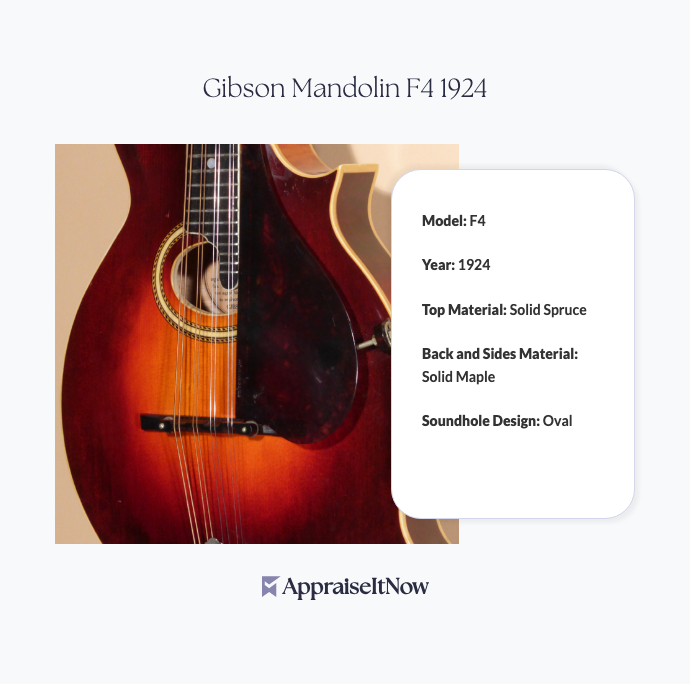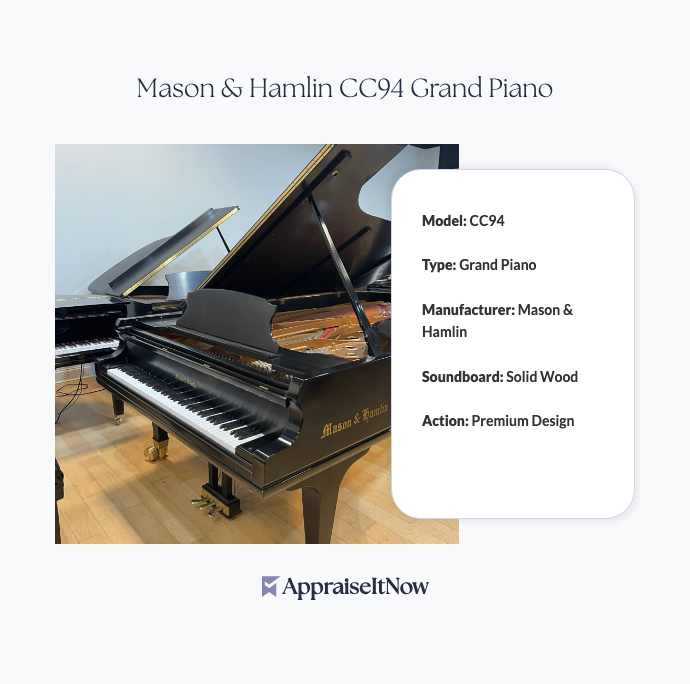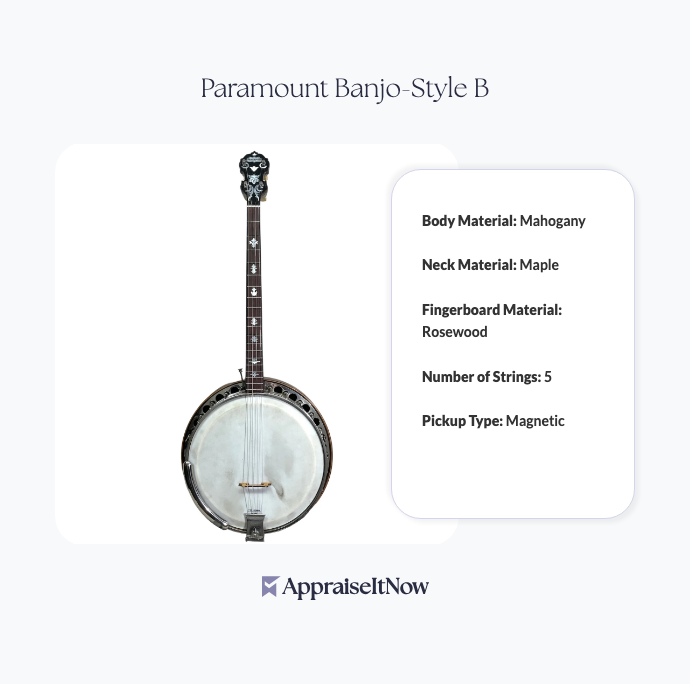<h1>How to Get Your Gibson Mandolin F4 1924 Appraised</h1>
<p>If you've inherited, discovered, or are considering purchasing a Gibson Mandolin F4 from 1924, understanding its value through professional appraisal is essential. This iconic pre-war instrument represents the peak of Gibson's craftsmanship and continues to command significant prices in today's collector market—typically valued between <strong>$4,000 and $6,000</strong> for quality examples. Whether you're evaluating the instrument for insurance, sale, or collection purposes, a certified appraisal provides the documentation and expertise needed to make informed decisions.</p>
<h2>Understanding the Gibson F4's Historical Significance</h2>
<p>The Gibson Mandolin F4 holds a unique position in American instrument history. First introduced in 1922 and handcrafted in Kalamazoo, Michigan, the F4 represents the golden era of Gibson's mandolin production before the Great Depression fundamentally altered the company's manufacturing priorities. Your 1924 example falls squarely within this production peak, making it particularly desirable among serious collectors and musicians alike.</p>
<p>What makes your 1924 F4 special? The vintage year matters considerably. Post-war Gibson mandolins, while still quality instruments, lack the mystique and craftsmanship of the pre-war period. Models from 1922-1928 represent what many collectors consider the holy grail of Gibson mandolins, combining exceptional tone with investment appreciation potential.</p>
<div class="callout tip"><p><strong>Collector's Insight</strong></p>
<p>Gibson mandolins from the 1920s often appreciate 3-5% annually as a vintage collectible, making professional valuation crucial for portfolio management.</p></div>
<h2>Key Features That Determine Your Mandolin's Value</h2>
<p>When appraising your Gibson F4, specific construction details and original components directly affect market worth. The authentic F4 design includes a hand-carved solid spruce top paired with solid maple back and sides—a construction method that contributes to the instrument's legendary tonal qualities. The distinctive oval soundhole design and iconic Gibson peghead with mother-of-pearl inlays are hallmark features that authenticate premium pricing.</p>
<p>Condition assessment becomes paramount in valuation. An original finish, intact inlays, and structurally sound wood command premium prices, while refinished examples or those requiring restoration may see 20-40% reductions. The question of how to tell if a mandolin is good extends beyond playability; collectors evaluate originality, clarity of tone, and historical authenticity as equally important factors.</p>
<p>Your F4's playability matters too, though not in traditional instrument evaluation. Unlike modern mandolins, vintage examples may require professional setup and maintenance to achieve optimal sound, yet this restoration potential doesn't diminish collector value if the underlying instrument remains structurally intact.</p>
<h2>Identifying Your Gibson Mandolin's Age and Authenticity</h2>
<p>How to date a Gibson mandolin requires examining several authentication markers. Serial numbers provide the most direct method—Gibson's numbering system changed multiple times throughout production, and your 1924 example should reflect patterns consistent with that era. The serial number typically appears on the neck block inside the instrument, though some early models may have markings on the back or sides.</p>
<p>Beyond serial numbers, construction details tell the instrument's story. Your F4 from 1924 should feature specific peghead designs, binding styles, and hardware configurations that distinguish it from later reproductions or different models. Examining the wood grain, finish characteristics, and tool marks can help professional appraisers confirm authenticity. Where are Gibson mandolins made? While modern production occurs in Nashville, your 1924 handcrafted original from Kalamazoo carries significantly higher value and collector prestige.</p>
<div class="callout note"><p><strong>Authentication Detail</strong></p>
<p>Original Gibson mandolins from the 1920s often display maker's marks, tool signatures, or wood grain patterns that modern instruments cannot replicate, adding to their authenticator credibility.</p></div>
<h2>When Professional Appraisal Becomes Essential</h2>
<p>You should seek professional appraisal services for your Gibson F4 in several specific situations. Estate planning requires documented values for distribution and tax purposes. Insurance coverage needs current replacement cost assessments to protect your investment. If you're considering selling through auction houses, dealers, or private sales, professional valuation establishes realistic pricing and supports negotiation credibility.</p>
<p>The distinction between casual evaluation and formal appraisal matters significantly. A dealer might offer a quick estimate based on market demand in their immediate region, but certified appraisers provide detailed documentation that reflects current comparable sales data and instrument-specific condition assessment. When seeking <a href="/blog/appraising-musical-instruments-determining-the-worth-of-melodic-investments">appraisals for musical instruments</a>, professional expertise ensures your 1924 Gibson receives valuation appropriate to its historical significance.</p>
<p>Many collectors ask: how do you find the value of an instrument? The answer involves multiple data points—recent sales of comparable vintage mandolins, geographic market variations, condition-adjusted pricing, and historical rarity factors. A certified appraiser integrates these elements into comprehensive reports suitable for legal, insurance, or transaction purposes.</p>
<h2>Documenting Your Gibson F4 for Appraisal</h2>
<p>Preparing your mandolin for professional appraisal requires thoughtful documentation. Gather any original paperwork, receipts, or provenance information that establishes ownership history. Photograph your instrument from multiple angles, capturing details like the peghead design, inlay work, any repairs or restoration marks, and serial number locations. Document the tonal qualities through video or audio recording if possible.</p>
<p>Clear images of the serial number area and any manufacturer markings prove invaluable during appraisal. Include photographs showing condition issues like cracks, refinishing, or hardware replacement, as these directly impact valuation. Historical documentation linking your F4 to previous owners or significant performances adds substantial collector appeal and justifies premium pricing.</p>
<p>How to tell the age of a mandolin becomes easier when you provide context. Mention any family history, previous ownership by musicians, or documentation about the instrument's acquisition. These details, combined with physical inspection and serial number verification, allow appraisers to establish confident dating and valuation.</p>
<h2>Understanding Market Variations for Vintage Mandolins</h2>
<p>Gibson mandolin values fluctuate based on several market factors beyond simple age and condition. The question of whether Gibson makes mandolins anymore reveals an important market dynamic—while Gibson continues some mandolin production, it's substantially different from pre-war originals. This distinction creates a clear collector preference for instruments like your 1924 F4, which represents authentic early production craftsmanship unavailable from modern manufacturers.</p>
<p>An F-style mandolin versus A-style presents another valuation consideration. The F4 designation indicates the larger, more ornate body style that commands premium pricing compared to A-model variants. If you're wondering which is better, an A or F style mandolin, the answer depends on your priorities. Collectors strongly prefer F-style instruments like your Gibson, particularly pre-war examples, making them more liquid investments.</p>
<div class="callout tip"><p><strong>Market Reality</strong></p>
<p>The vintage mandolin market shows stronger appreciation potential than modern instruments, with pre-war Gibsons consistently outpacing post-1950 production in collector demand and value retention.</p></div>
<h2>Regional and Seasonal Market Considerations</h2>
<p>Your Gibson F4 value may vary based on geographic market conditions and seasonal collector activity. Urban areas with active bluegrass or folk music communities often support stronger pricing than rural regions. Online auction platforms have created more transparent pricing, though regional variations persist. A mandolin seller in Nashville might achieve different results than an identical instrument in a coastal market dominated by different musical traditions.</p>
<p>Seasonal factors matter too. Folk music festivals and bluegrass competitions coincide with increased collector activity, potentially supporting stronger bidding for <a href="/types/memorabilia-and-collectibles">memorabilia and collectibles</a>. Professional appraisers account for these temporal factors when establishing fair market value.</p>
<h2>Professional Appraisal Standards and Credentials</h2>
<p>Quality appraisals come from credentialed experts who understand vintage instrument evaluation. AppraiseItNow connects you with appraisers holding credentials from organizations like the <strong>American Society of Appraisers (ASA)</strong>, <strong>International Society of Appraisers (ISA)</strong>, or similar professional bodies. These certifications indicate training in USPAP (Uniform Standards of Professional Appraisal Practice) compliance and specialized knowledge in musical instruments.</p>
<p>When selecting an appraiser, verify their experience with vintage stringed instruments specifically. Someone skilled in furniture appraisal may lack the specialized knowledge required to authenticate and value a 1924 Gibson mandolin properly. Ask about their experience with pre-war Gibsons and request references from previous clients who owned similar instruments.</p>
<p>Professional appraisers evaluate more than surface condition. They assess tonal quality through playing tests, examine internal structural integrity, verify wood authenticity and age-appropriate characteristics, and research comparable recent sales. This comprehensive approach justifies professional fees while ensuring accurate valuation that stands up to insurance claims, legal proceedings, or auction-house authentication.</p>
<h2>Condition Assessment and Value Impact</h2>
<p>The condition of your Gibson F4 directly determines where within the <strong>$4,000-$6,000 range</strong> your instrument falls. An original finish in excellent condition with intact inlays, no cracks, and full structural integrity commands top-tier pricing. Very good condition examples showing minor wear but retaining originality typically achieve $5,000-$5,500. Good condition instruments with some finish wear or minor repairs drop to $4,500-$5,000. Fair condition mandolins requiring restoration may fall toward the lower end around $4,000.</p>
<p>Cracks in the top, back, or sides reduce value substantially, as do missing inlays, hardware replacement, or extensive refinishing. However, structural repairs by competent luthiers don't eliminate value the way damage indicates would. The key distinction involves original characteristics—a properly restored Gibson with original construction maintains collector value better than one with modern modifications.</p>
<p>Consider how to clean a vintage mandolin carefully if you're planning appraisal. Professional cleaning by experienced luthiers enhances presentation without damaging patina or finish characteristics that contribute to authenticity. Avoid aggressive cleaning that removes evidence of age or originality, as these factors support higher valuations.</p>
<div class="callout note"><p><strong>Condition Reality</strong></p>
<p>Even well-maintained instruments show their age; appraisers expect appropriate patina and minor wear on 100-year-old mandolins, and these characteristics actually support authenticity claims.</p></div>
<h2>The Role of Provenance in Valuation</h2>
<p>An instrument's ownership history significantly impacts value. Mandolins with documented performance history, previous ownership by respected musicians, or connection to significant recordings command premium pricing. Someone who plays the mandolin—particularly if they achieved recognition—can dramatically increase an instrument's collector appeal. Professional appraisers research ownership chains and documentation that establishes such provenance.</p>
<p>Your Gibson F4 becomes more valuable if you can document previous ownership or performance history. Family stories about the instrument's origins matter less than verifiable documentation, but both contribute to the overall narrative that collectors value. Auction catalogs, concert programs, or equipment lists featuring your specific instrument create compelling provenance that justifies premium pricing.</p>
<h2>Getting Your Appraisal Done</h2>
<p>The appraisal process begins with submitting clear photographs and basic information about your Gibson F4. AppraiseItNow's online submission process allows you to document condition, provide serial number details, and upload high-resolution images from multiple angles. Our certified appraisers then conduct comprehensive evaluation incorporating market analysis, condition assessment, and historical research.</p>
<p>Expect the appraisal to include detailed photographs of your instrument, condition summary, comparable sales analysis, and documented valuation with methodology explanation. The final report provides documentation suitable for insurance, estate purposes, or auction-house submission. USPAP-compliant reporting ensures your appraisal meets professional standards and carries weight in legal or financial contexts.</p>
<p>For vintage instruments like your 1924 Gibson Mandolin F4, professional appraisal transforms casual ownership into documented investment management. Whether you're preserving family heritage, building a serious collection, or preparing for sale, certified valuation provides confidence and clarity about this significant musical asset.</p>
<div class="callout note"><p><strong>Key Takeaway</strong></p>
<p>A professional appraisal of your Gibson Mandolin F4 1924 provides accurate valuation within the $4,000-$6,000 range, establishes authenticity through documented analysis, and creates the formal documentation needed for insurance, estate planning, or sale purposes—ensuring this iconic instrument is properly valued and protected.</p></div>







.avif)







